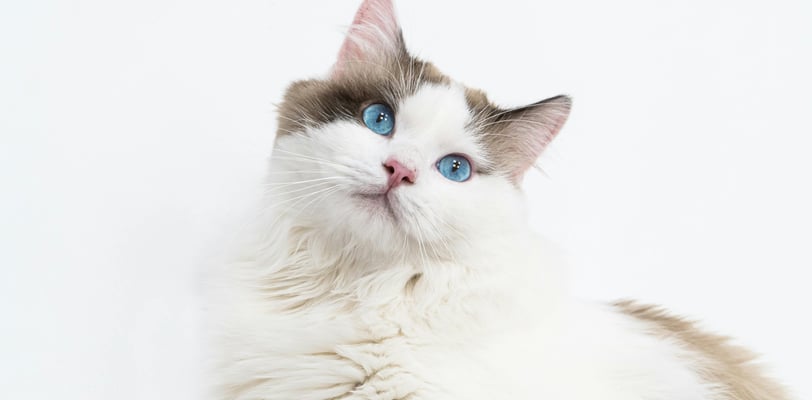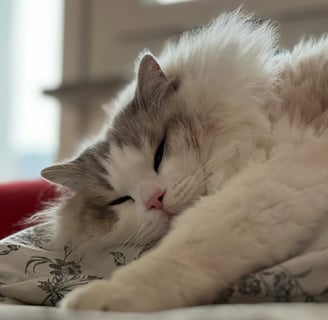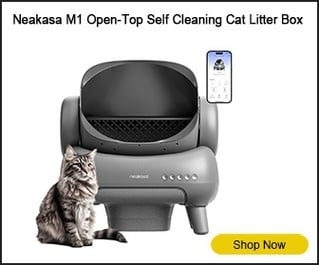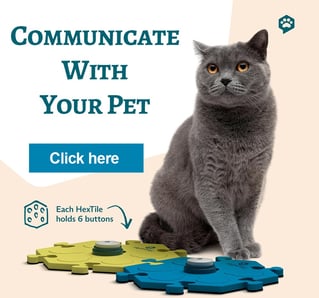The Ragdoll Cat
6/30/20243 min read


A Gentle Giant with a Loving Heart
The Ragdoll cat, known for its striking blue eyes, silky fur, and affectionate nature, is a breed that has captured the hearts of many cat enthusiasts. Originating in the 1960s, the Ragdoll is often referred to as the "puppy cat" due to its docile temperament and tendency to follow its owners around the house. This article delves into the history, characteristics, and care requirements of this beloved feline breed.
History of the Ragdoll Cat
The Ragdoll breed was developed in the early 1960s by Ann Baker, a breeder in Riverside, California. The foundation cat of the Ragdoll breed was a white longhaired cat named Josephine, who, after being involved in an accident, produced kittens with unique temperaments and physical traits. Baker selectively bred these kittens, emphasizing their calm demeanor and affectionate nature. She named the breed "Ragdoll" due to their tendency to go limp and relaxed when picked up, much like a ragdoll toy.
This site contains product affiliate links. We may receive a commission if you make a purchase after clicking on one of these links at no cost to you.
Physical Characteristics
Ragdolls are one of the largest domesticated cat breeds, with males typically weighing between 15-20 pounds and females ranging from 10-15 pounds. They have a muscular build, broad chest, and a semi-longhaired coat that feels soft and silky to the touch. Ragdolls come in a variety of colors and patterns, including colorpoint, mitted, and bicolor. Common color variations include seal, blue, chocolate, and lilac.
One of the most striking features of the Ragdoll cat is its vivid blue eyes, which are almond-shaped and can range from a light sky blue to a deep sapphire. Their eyes give them a sweet and expressive appearance, adding to their overall charm.
Temperament and Personality
Ragdolls are known for their exceptionally gentle and affectionate nature. They are often described as "puppy-like" because they enjoy following their owners from room to room, greeting them at the door, and even playing fetch. Unlike some other breeds, Ragdolls are not typically aloof or independent; they thrive on human companionship and enjoy being a part of the family.
These cats are also known for their calm demeanor and tolerance of handling, making them an excellent choice for families with children or other pets. Ragdolls are not particularly vocal, but they may communicate with soft chirps and trills to express their needs or affection.


Care and Maintenance
The Ragdoll's luxurious coat requires regular grooming to prevent tangles and matting. While their fur is not prone to excessive shedding, brushing your Ragdoll two to three times a week will help keep their coat in top condition and reduce the risk of hairballs. Regular grooming sessions also provide an excellent opportunity for bonding with your cat.
In terms of health, Ragdolls are generally robust, but they can be prone to certain genetic conditions such as hypertrophic cardiomyopathy (HCM), a type of heart disease. It's essential to choose a reputable breeder who screens their breeding cats for such conditions to ensure the healthiest possible kitten.
Ragdolls require a balanced diet to maintain their health and weight. High-quality cat food, whether commercial or home-prepared, should provide the necessary nutrients. Fresh water should always be available, and regular veterinary check-ups are crucial to monitor their health and well-being.


Enrichment and Activity
Despite their laid-back nature, Ragdolls still need mental and physical stimulation. Providing a variety of toys, scratching posts, and interactive playtime can help keep them engaged and prevent boredom. Ragdolls enjoy puzzle toys and games that challenge their intelligence and curiosity.
Conclusion
The Ragdoll cat is a delightful blend of beauty, gentleness, and affection, making it a wonderful addition to many households. Their easygoing temperament and loving nature make them ideal companions for individuals and families alike. By understanding their unique needs and characteristics, you can provide a happy and fulfilling life for your Ragdoll cat, ensuring years of companionship and joy.


Relate Articles
Purrfect Meow
Join our Meow community
© 2024. All rights reserved.
PurrFectMeowSeven is a participant in the Amazon Services LLC Associates Program, an affiliate advertising program designed to provide a means for sites to earn advertising fees by advertising and linking to Amazon.com. As an Amazon Associate, we earn from qualifying purchases.






